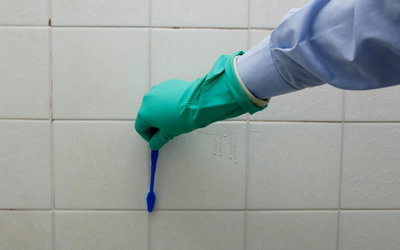Household Hazard: 5 Ways To Prevent Toxic House Mold
Between the walls of many homes hides a toxic hazard. Stacybotrys, or Black Mold is often found in poorly ventilated buildings, or places where there has been water damage. It gained national attention in the 1990’s, when at least 10 infants died in Ohio from exposure to the toxic house mold. Symptoms can range from chronic fatigue, fever and headaches, to nausea, vomiting and bleeding in the lungs.
If you do have black mold growing in your home you might not even realize it, as it could be hiding in your sheet rock, or ceiling tiles. With a black, shiny appearance,when wet, this toxic house mold typically spreads very easily and is quite difficult to eradicate. The easiest way to deal with mold is to simply prevent it. Here are a few simple tips to help prevent an issue in your home and protect your family.
Use Mold Resistant Materials
When building a home a great way to combat mold from the start is to use mold resistant materials. There is mold resistant drywall, mold resistant sheet rock and mold inhibitors used in paint on the market today.Any of these materials could help prevent hazardous mold in your home, and protect your family.
Dry Any Wet Area Immediately
Moisture is required for mold to grow, so it is important to dry any wet areas immediately. Mold is notorious for growing in basements after a heavy rain and in carpet after a spilled drink. Mold can even grow in wet clothing if it is left in the washing machine too long and on the floor and walls around a shower. No matter why an area of the home is wet, it should be completely dried within 48 hours to fight against growing mold.
Provide Proper Insulation
Conditions in the home give mold an environment to grow. Insulation helps keep unwanted moisture out of the home. For example, insulating a home with spray foam insulation in Roanoke VA prevents the humidity that is common in that area from entering the walls, and allows imperfections in the building structure such as cracks or holes to be filled in to prevent moisture flow through the home.
Improve Airflow Through The Home
Excess moisture in the air is commonly found on windows and floors in a home. Proper airflow helps keep the air moving to prevent the moisture from visibly sticking to areas in the home. Airflow can be improved by keeping furniture away from walls, keeping doors open between rooms, and keeping doors to closets that get extremely cold open. Fresh air reduces moisture in the air and keeps mold growth to a minimal.
Keep Water Away From The Home
Proper drainage outside the home is important to keep moisture outside. If the ground around the home is not properly equipped with drainage, moisture can get into crawlspaces and the basement. Installing proper drainage to keep water moving away from the foundation of the home will help keep the crawlspace and basement dry to keep away mold.
Toxic house mold is an issue no homeowner wants to face. Once mold starts growing, it is near impossible to get rid of. If you take some of these precautions now, you could protect yourself and your family from this hidden hazard.


Comments are closed.